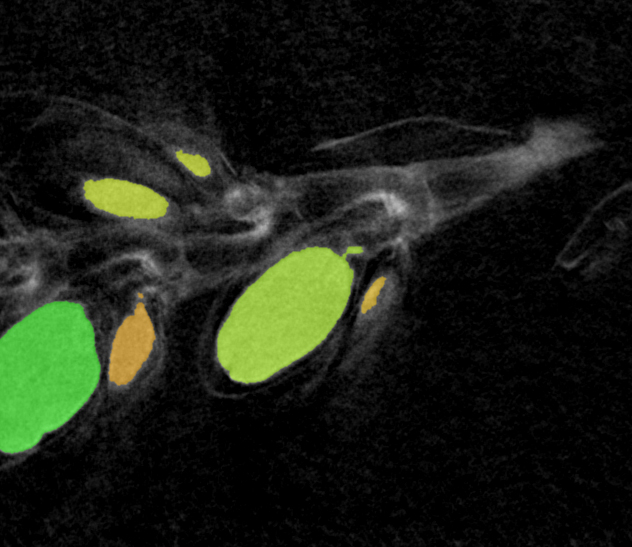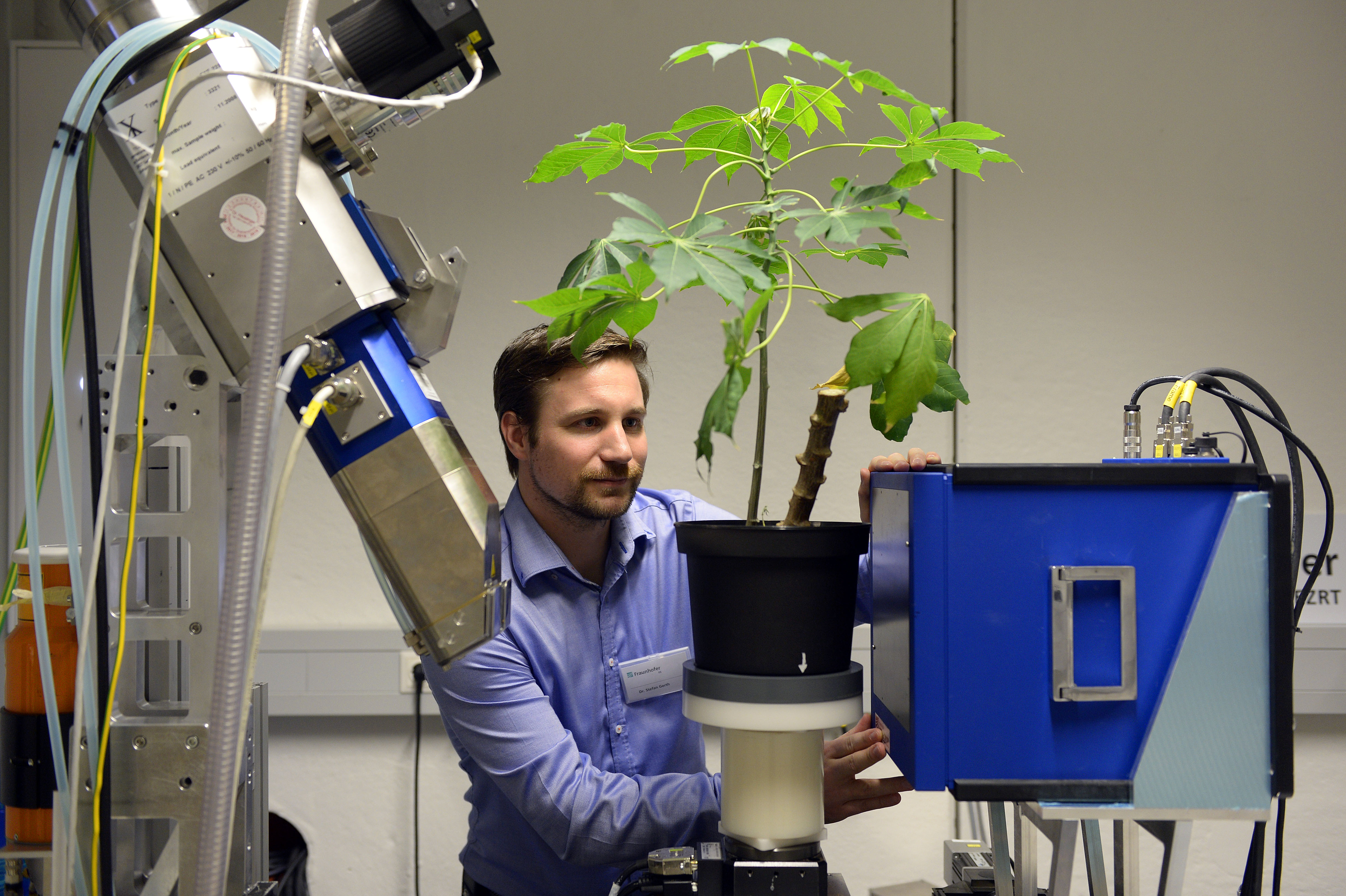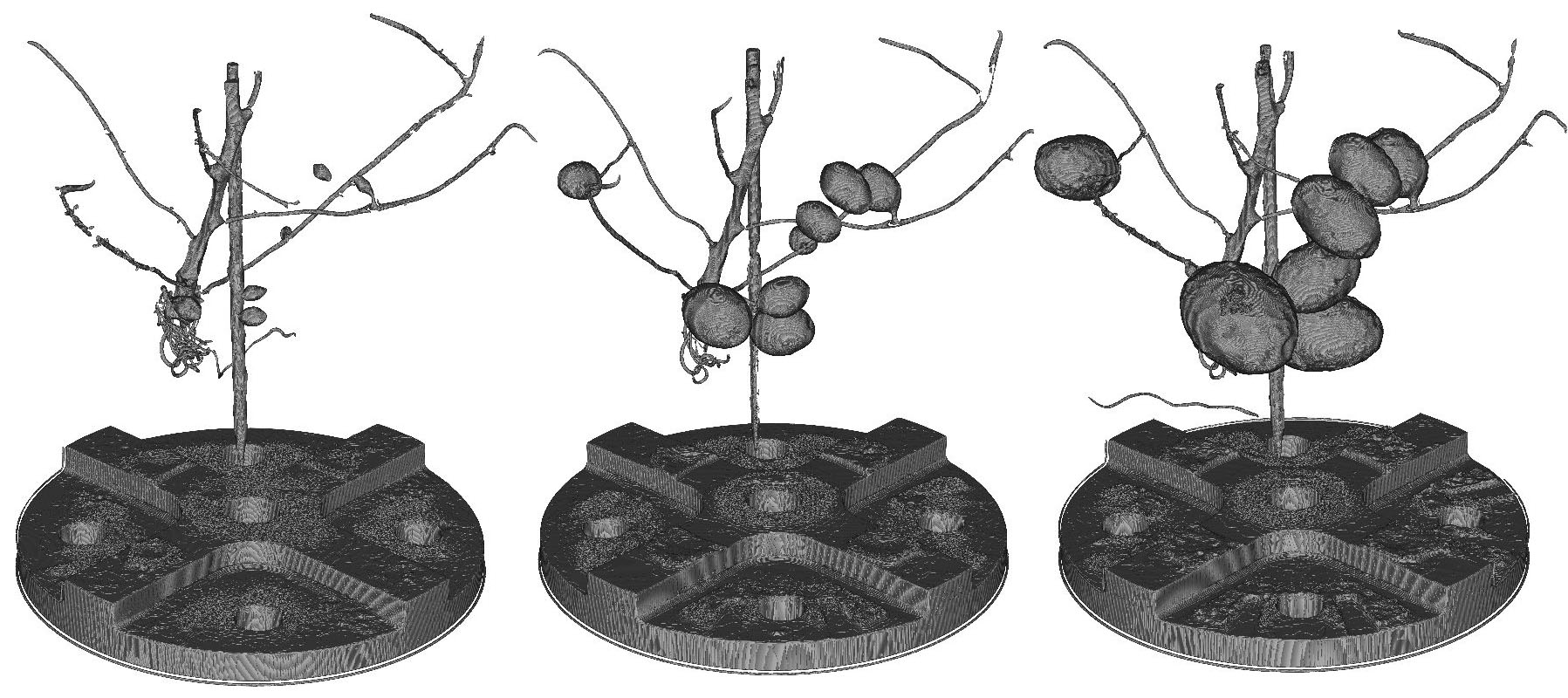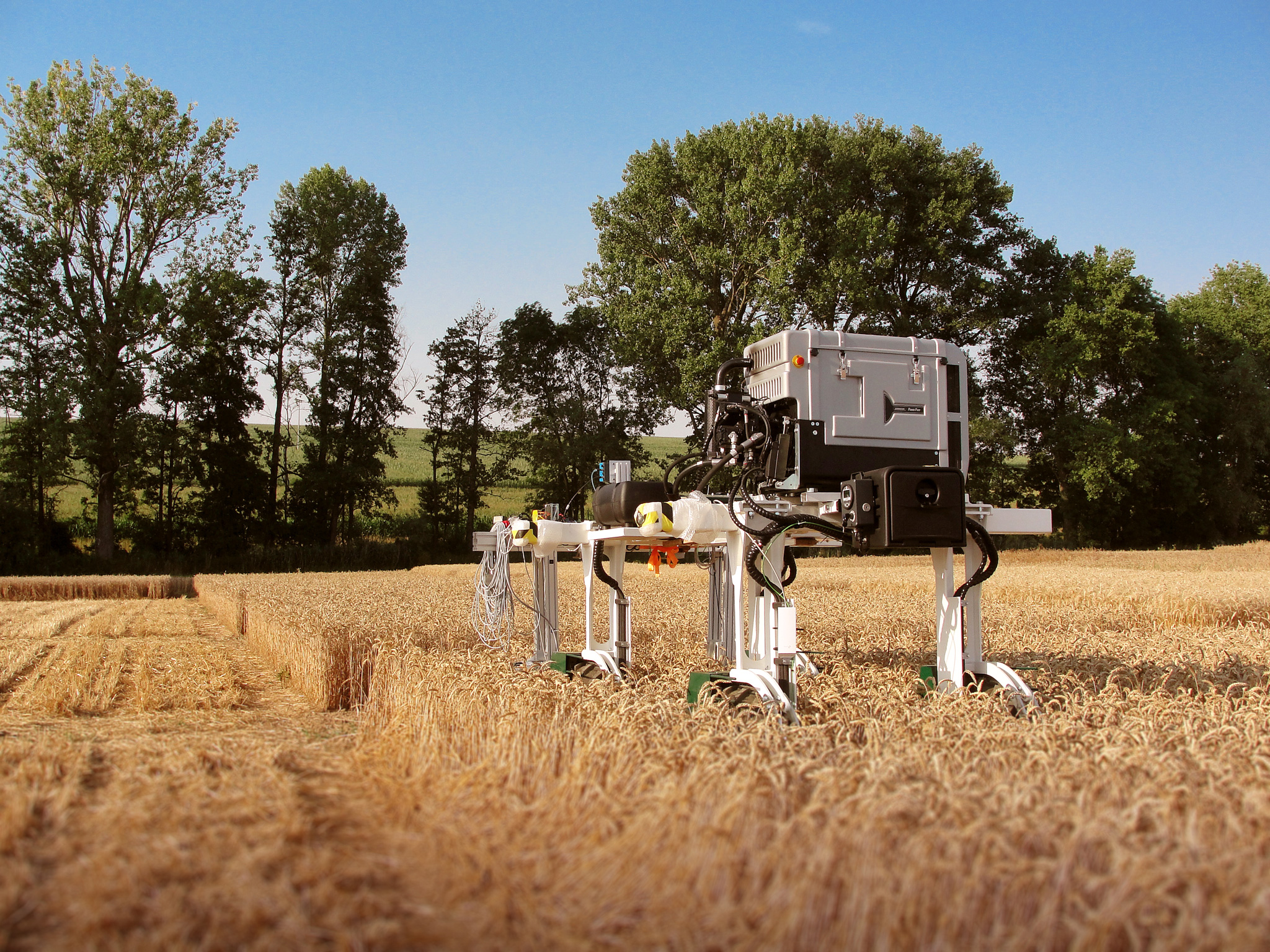Stefan Gerth is a researcher and group manager at the Fraunhofer Development Center for X-Ray Technology in Fürth. He oversees the development of CT systems to aid the selection of heat-tolerant crops. His group's research makes an important contribution to the efforts of plant breeders to respond to the threat of climate change. #WeKnowHow
Can X-ray technology help plants withstand climate change?
4.9.2020
He started out X-raying potatoes, but these days Stefan Gerth and his team of around ten researchers X-ray entire wheat fields. He has a clear goal in sight: "We want to help plants withstand the effects of climate change," explains the 36-year-old physicist. "Our X-ray systems help breeders select crop varieties that are ideally suited to hot and dry conditions."
Stefan Gerth embarked on his ambitious mission seven years ago, when he pointed his X-ray equipment at the ground to examine potato tubers under heat stress. His goal was to monitor their growth without digging them up. To this end, the team planted potatoes in flowerpots and built a CT scanner to X-ray them. "By X-raying the plants on a regular basis, we were able to observe how heat and drought affected the tubers' formation," Gerth reports.
What does the inside of an ear of wheat look like?

For the breeders involved in the project, this is invaluable information. They use the data for phenotyping – the process of surveying a crop's external traits to determine which plants are selected for breeding. Farmers have employed phenotyping for over 10,000 years, but the work being done by Stefan Gerth and his team has shone a light on previously hidden traits for the first time.
Gerth's technology is already in the application stage, in the form of a CT scanner that X-rays flowerpots in the greenhouse one by one, in a fully automated process. In China, the technology is being used for potato breeding, while projects in the US and Australia focus on maize and heat-resistant wheat respectively.
When it comes to wheat, Gerth is more interested in ears than roots. "From the outside, there is no way of telling how many grains of wheat a given ear contains," Gerth explains. Until now, this meant that breeders had to thresh each ear individually in order to count the grains. With the automated CT system from the Fraunhofer IIS Development Center for X-Ray Technology, thousands of ears can now be examined for a wide range of traits in a very short time.
Can entire fields be X-rayed?
The team's latest innovation can even be used to X-ray entire fields of wheat: DeBiFix is a long-legged, four-wheeled vehicle that slowly traverses the field, scanning the ears of wheat as it goes. "By performing consecutive X-ray scans, breeders can monitor the growth of grains in the ears," Gerth explains. "This allows them to observe how individual varieties react to heat or drought in situ."
However, Gerth is still a long way from declaring "mission accomplished". He plans to develop technology that can be used to monitor the growth of potatoes or plant roots in the open field – with a view to providing even greater support to plant breeders in their response to the challenges of climate change.
Article by Christine Broll.


